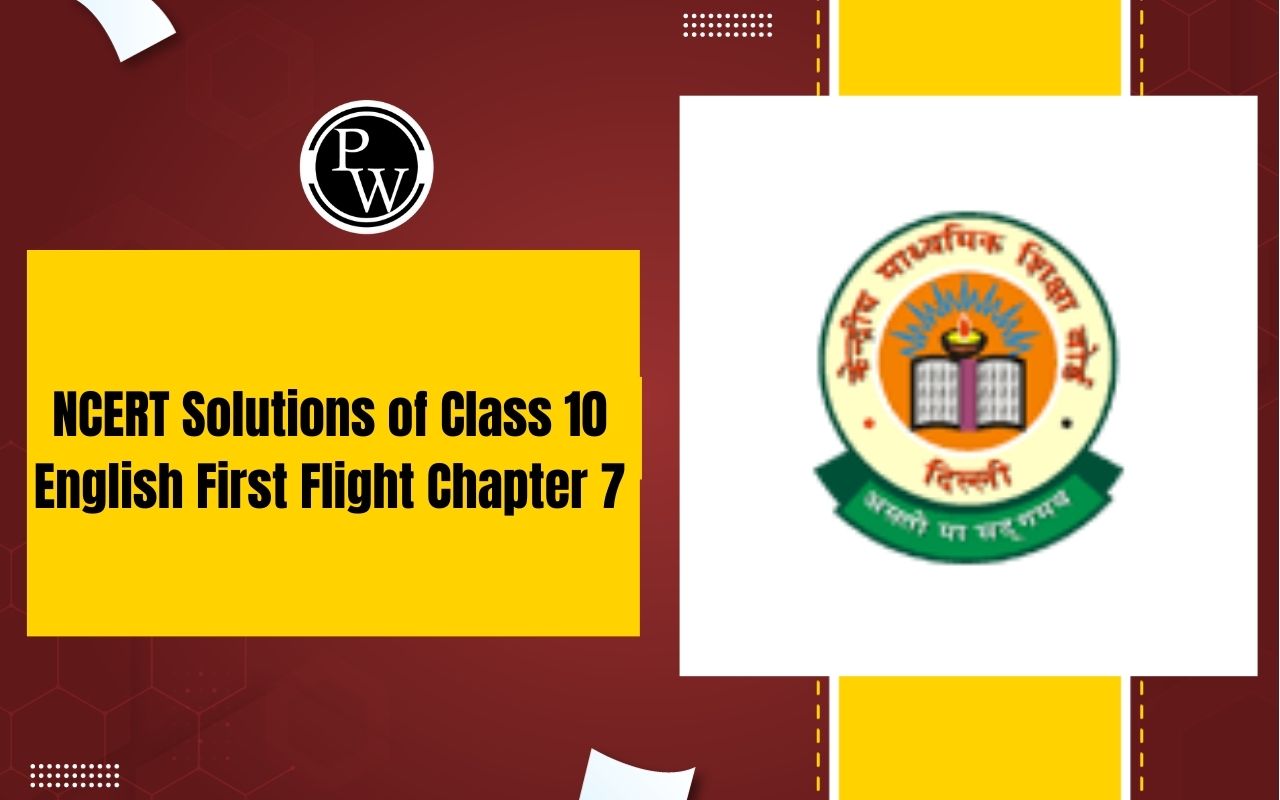
RS Aggarwal Solutions for Class 10 Maths Chapter 1: RS Aggarwal Solutions for Class 10 Maths Chapter 1, "Real Numbers," helps students understand important math concepts in a clear and simple way.
This chapter covers topics like the Euclidean Division Algorithm, the Fundamental Theorem of Arithmetic, and how to find the Highest Common Factor (HCF) and Least Common Multiple (LCM). The solutions provide step-by-step explanations and examples, making it easier for students to learn and solve problems. These solutions are great for building a strong math foundation and preparing for exams.RS Aggarwal Solutions for Class 10 Maths Chapter 1 Real Numbers Overview
These notes, created by the experts at Physics Wallah, give an overview of RS Aggarwal Solutions for Class 10 Maths Chapter 1, "Real Numbers." This chapter covers key topics like the Euclidean Division Algorithm, the Fundamental Theorem of Arithmetic, and how to find the Highest Common Factor (HCF) and Least Common Multiple (LCM). The solutions are clearly explained with step-by-step instructions, making it easy for students to understand and solve problems. These notes are a valuable resource for exam preparation and help students build a strong foundation in mathematics.RS Aggarwal Solutions for Class 10 Maths Chapter 1 PDF
The PDF link below has RS Aggarwal Solutions for Class 10 Maths Chapter 1, "Real Numbers." The solutions are easy to follow with step-by-step explanations, helping students understand and solve problems. This PDF is a great resource for studying and building strong math skills.RS Aggarwal Solutions for Class 10 Maths Chapter 1 PDF
What is Real Numbers?
Real numbers include all the numbers that can be found on the number line. This includes:- Natural Numbers : Counting numbers like 1, 2, 3, and so on.
- Whole Numbers : Natural numbers plus zero (0, 1, 2, 3, ...).
- Integers : Whole numbers and their negatives (..., -3, -2, -1, 0, 1, 2, 3, ...).
- Rational Numbers : Numbers that can be expressed as fractions (like 1/2, 3/4) or as repeating or terminating decimals (like 0.5 or 0.333...).
- Irrational Numbers : Numbers that cannot be expressed as simple fractions and have non-repeating, non-terminating decimals (like √2 or π).
RS Aggarwal Solutions for Class 10 Maths Chapter 1 Exercise Real Numbers
Here we have provided RS Aggarwal Solutions for Class 10 Maths Chapter 1 Real Numbers for the ease of students so that they can prepare better for their exams.Question 1.
Solution:
For any two given positive integers a and b, there exist unique whole numbers q and r such that a = bq + r, when 0 ≤ r < b. Here, a is called the dividend, b is a divisor, q is the quotient, and r is the remainder. Dividend = (Divisor x Quotient) + Remainder.Question 2.
Solution:
Using Euclid’s division Lemma Dividend = (Divisor x Quotient) + Remainder = (61 x 27) + 32 = 1647 + 32 = 1679 Required number = 1679Question 3.
Solution:
Let the required divisor = x Then by Euclid’s division Lemma, Dividend = (Divisor x Quotient) + remainder 1365 = x x 31 + 32 => 1365 = 31x + 32 => 31x= 1365 – 32 = 1333 x = 1331 31 = 43 Divisor = 43Question 4.
Solution:
Let n be a given positive odd integer. On dividing n by 6, let m be the quotient and r be the remainder, then by Euclid’s division Lemma. n = 6m + r, where 0 ≤ r < 6 => n = 6m + r, where r = 0, 1, 2, 3, 4, 5 => n = 6m or (6m + 1) or (6m + 2) or (6m + 3) or (6m + 4) or (6m + 5) But n = 6m, (6m + 2) and (6m + 4) are even. Thus when n is odd, it will be in the form of (6m + 1) (6m + 3), or (6m + 5) for some integer m.Question 5.
Solution:
Let n be an arbitrary odd positive integer. On dividing by 4, let m be the quotient and r be the remainder. So to Euclid’s division lemma, n = 4m + r, where 0 ≤ r < 4 n = 4m or (4m + 1) or (4m + 2) or (4m + 3) But 4m and (4m + 2) are even integers. Since n is odd, so n ≠ 4m or n ≠ (4m + 2) n = (4m + 1) or (4m + 3) for some integer m. Hence any positive odd integer is of the form (4m + 1) or (4m + 3) for some integer m.Question 6.
Solution:
Let a = n 3 – n => a = n (n 2 – 1) => a = n (n – 1) (n + 1) [(a 2 – b 2 ) = (a – b) (a + b)] => a = (n – 1 ) n (n + 1) We know that, (i) If a number is completely divisible by 2 and 3, then it is also divisible by 6. (ii) If the sum of digits of any number is divisible by 3, then it is also divisible by 3. (iii) If one of the factors of any number is an even number, then it is also divisible by 2. a = (n – 1) n (n + 1) [From Eq. (i)] Now, the sum of the digits = n – 1 + n + n + 1 = 3n = Multiple of 3, where n is any positive integer. and (n – 1) n (n +1) will always be even, as one out of (n – 1) or n or (n + 1) must be even. Since, conditions (ii) and (iii) completely satisfy Eq. (i). Hence, by condition (i) the number n3 – n is always divisible by 6, where n is any positive integer. Hence proved.Question 7.
Solution:
Let x = 2m + 1 and y = 2m + 3 are odd positive integers, for every positive integer m. Then, x 2 + y 2 = (2m + 1) 2 + (2m + 3) 2 = 4m 2 + 1 + 4 m + 4m 2 + 9 + 12m [(a + b) 2 = a 2 + 2ab + b 2 ] = 8m 2 + 16m + 10 = even = 2(4m 2 + 8m + 5) or 4(2m 2 + 4m + 2) + 1 Hence, x 2 + y 2 is even for every positive integer m but not divisible by 4.Benefits of RS Aggarwal Solutions for Class 10 Maths Chapter 1
- Clear Explanations : Each solution is provided with step-by-step explanations, making it easier for students to understand complex concepts and solve problems effectively.
- Comprehensive Coverage : The solutions cover all topics in the chapter, including the Euclidean Division Algorithm, the Fundamental Theorem of Arithmetic, and methods to find HCF and LCM, ensuring thorough preparation.
- Problem-Solving Skills : By working through these solutions, students can improve their problem-solving skills and learn how to approach different types of questions confidently.
- Exam Preparation : The solutions help students prepare for exams by providing practice with a variety of problems similar to those they might encounter in their tests.
- Foundation Building : These solutions help build a strong foundation in mathematics, which is essential for understanding more advanced topics in higher classes.
- Self-Learning : The detailed explanations and step-by-step approach enable students to study and learn on their own, promoting independent learning.
- Error Reduction : By following these solutions, students can identify and correct their mistakes, leading to a better understanding of the subject and improved accuracy.
RS Aggarwal Solutions for Class 10 Maths Chapter 1 Real Numbers FAQs
What are Real Numbers?
Real numbers include all rational and irrational numbers. They can be represented on the number line and include integers, fractions, decimals, and more.
What is the Euclidean Division Algorithm?
The Euclidean Division Algorithm is a method used to find the quotient and remainder when dividing one integer (dividend) by another (divisor).
What is the Fundamental Theorem of Arithmetic?
The Fundamental Theorem of Arithmetic states that every integer greater than 1 can be uniquely expressed as a product of prime numbers.
How do you find the Highest Common Factor (HCF) and Least Common Multiple (LCM)?
The HCF of two or more numbers is the largest number that divides each of them without leaving a remainder. The LCM is the smallest number that is a multiple of each of the numbers.
What are Rational and Irrational Numbers?
Rational numbers can be expressed as fractions or as terminating or repeating decimals. Irrational numbers cannot be expressed as fractions and have non-repeating, non-terminating decimals.
Why are Real Numbers important?
Real numbers are fundamental in mathematics as they form the basis for solving equations, representing quantities, and understanding relationships between numbers.
🔥 Trending Blogs
Talk to a counsellorHave doubts? Our support team will be happy to assist you!

Check out these Related Articles
Free Learning Resources
PW Books
Notes (Class 10-12)
PW Study Materials
Notes (Class 6-9)
Ncert Solutions
Govt Exams
Class 6th to 12th Online Courses
Govt Job Exams Courses
UPSC Coaching
Defence Exam Coaching
Gate Exam Coaching
Other Exams
Know about Physics Wallah
Physics Wallah is an Indian edtech platform that provides accessible & comprehensive learning experiences to students from Class 6th to postgraduate level. We also provide extensive NCERT solutions, sample paper, NEET, JEE Mains, BITSAT previous year papers & more such resources to students. Physics Wallah also caters to over 3.5 million registered students and over 78 lakh+ Youtube subscribers with 4.8 rating on its app.
We Stand Out because
We provide students with intensive courses with India’s qualified & experienced faculties & mentors. PW strives to make the learning experience comprehensive and accessible for students of all sections of society. We believe in empowering every single student who couldn't dream of a good career in engineering and medical field earlier.
Our Key Focus Areas
Physics Wallah's main focus is to make the learning experience as economical as possible for all students. With our affordable courses like Lakshya, Udaan and Arjuna and many others, we have been able to provide a platform for lakhs of aspirants. From providing Chemistry, Maths, Physics formula to giving e-books of eminent authors like RD Sharma, RS Aggarwal and Lakhmir Singh, PW focuses on every single student's need for preparation.
What Makes Us Different
Physics Wallah strives to develop a comprehensive pedagogical structure for students, where they get a state-of-the-art learning experience with study material and resources. Apart from catering students preparing for JEE Mains and NEET, PW also provides study material for each state board like Uttar Pradesh, Bihar, and others
Copyright © 2025 Physicswallah Limited All rights reserved.









